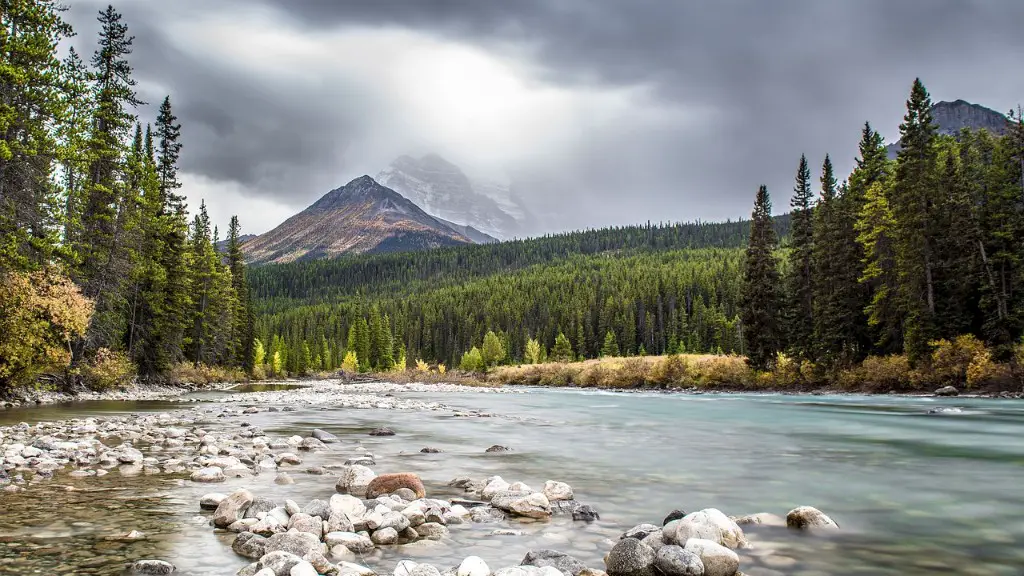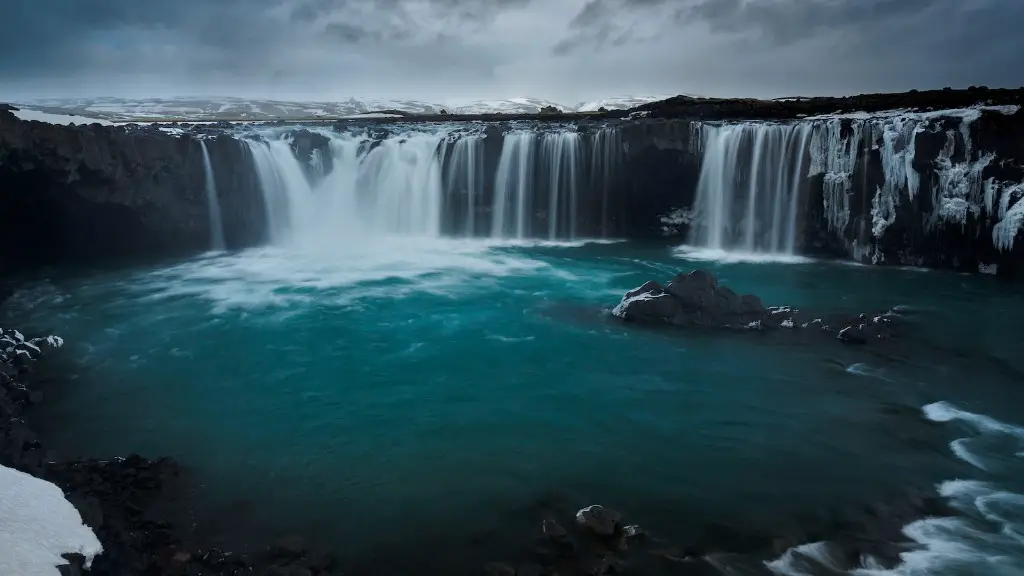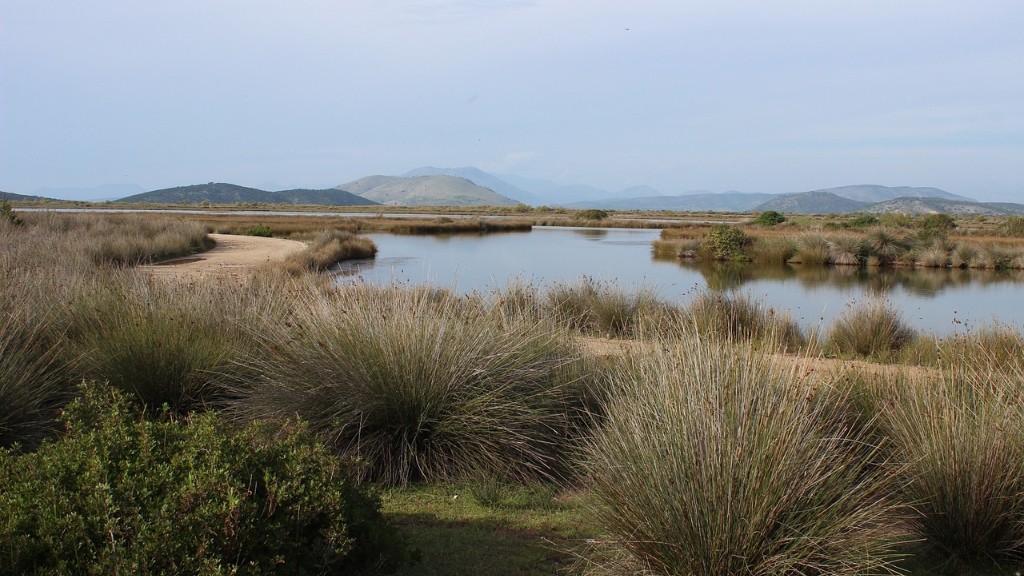The Yangtze River is the longest river in China and the third longest river in the world, with an estimated length of 6,380 km (3,964 mi). It originates in the Tibetan Plateau in Qinghai, China, and flows through nine provinces of China before emptying into the East China Sea. Along its journey, it passes through several major cities including Chongqing, Wuhan, Nanjing, and Shanghai.
The Yangtze River has been considered a crucial part of Chinese culture for centuries, acting as an important water resource for transportation and agriculture. The river is home to the critically endangered Chinese river dolphin, or baiji, one of the world’s most endangered species. It is also home to a fragile and unique ecosystem, with a variety of rare animals, insects, and plants found along the river’s course.
Experts say the river is facing a variety of challenges due to anthropogenic activities, including agricultural runoff, industrial pollution, and excessive water consumption. Studies have shown that the Yangtze River is becoming increasingly polluted, with bacteria and toxic chemicals accumulating in its waters. As a result, the river’s aquatic life is being threatened, and some of its species are in danger of extinction.
The Yangtze River is widely regarded as a symbol of Chinese heritage and tradition, and its history has shaped the development of Chinese civilization. Numerous cultural landmarks have been built along the river’s banks, providing insight into the country’s rich heritage. Notable sites include the Three Gorges Dam, the longest dam in the world; the Shanghai Bund, a popular tourist destination; and the Yuzhong district in Chongqing, home to many historical buildings and sites.
The Chinese government has taken numerous steps in recent years to protect the Yangtze River and its unique environment. New laws and regulations have been implemented to reduce pollution from the river and its tributaries, and the government has established a number of nature reserves along the river’s length. Conservation groups have also been working to restore fish stocks and preserve the river’s biodiversity.
The Yangtze River plays a crucial role in the economic and social development of China, providing vital resources and opportunities to the local population. More than 400 million people depend upon the river for their livelihoods, relying upon its ecosystem to support their businesses and farming operations. Despite its ongoing threats and challenges, the Yangtze River continues to be one of the most important rivers in the world.
Plants Defined by the Yangtze River
The Yangtze River is home to an array of plants and
animals, including some that are endemic to the region or found
nowhere else. Endemic plants of the Yangtze River include two species
of Magnolia and four species of Camellia, among other unique species
ranging from conifers to herbs.
The region’s unique vegetation is divided into five distinct sections
over the course of the river. The upper reaches of the river flow through
the alpine zone, a region of steppes and meadows characterized by its
rugged terrain and sparse vegetation. In the middle reaches, the
river enters a transition zone characterized by lush grasslands, bushes
and small shrubs, with a variety of deciduous trees. The lower reaches
contain both grasslands and broad-leaved forests, with a variety of
subtropical trees and shrubs.
The rapid change in vegetation along the Yangtze River is primarily
due to elevation changes. Also, the Yangtze River’s 4-gorges
climax with the Three Gorges Dam, where the temperature and
humidity are more extreme than the upper parts of the river.
The dam causes several distinct changes in the species diversity of
the river, including the introduction of new aquatic species.
The Yangtze River has an important role in the conservation of
ecosystems, with nearly 20 percent of the country’s freshwater fish
found along its course. Notable species include the beak-billed
carp, a fish endemic to the river, and the Chinese sturgeon, one
of the oldest species of fish in the world.
Human Involvement & Impact on the Yangtze River
The Yangtze River has long been used for human activities, including
transportation and industry. In the late 19th century, the construction
of railways and truck roads on the riverbanks significantly boosted
the local economy. In the 20th century, the growth of large-scale
port facilities and freight transport further enhanced human use of
the river.
The region’s booming population has also contributed to an increase
in pollution and environmental degradation in the Yangtze River.
Industrial waste and toxic pollutants from nearby factories and
urban runoff have accumulated in the river, threatening its aquatic
life and surrounding ecosystems. In addition, factors such as global
warming and climate change are causing water levels in the river to
rise, leading to increased flooding and soil erosion.
The Chinese government has implemented a number of initiatives
to reduce pollution and protect the environment of the Yangtze
River. Many cities have adopted programs aimed at reducing
water consumption, while pollution control initiatives are also in
place to protect the river’s aquatic life. In addition, the Chinese
government has developed plans to invest in river conservation,
ecotourism, and the protection of endangered species.
The Yangtze River has been a crucial part of Chinese culture for
centuries and continues to be a major source of livelihood for
the people living in its vicinity. Its unique environment and fragile
ecosystems must be protected and preserved if the river is to
continue providing the resources necessary for human survival.
By continuing to work together, China and the world can help
ensure the future of the Yangtze River.
Threats to the Yangtze River
The Yangtze River is facing a variety of threats, both natural and
human-induced. A major source of these threats is human-induced
pollution, which has the potential to dramatically reduce the water
quality of the river and damage the fragile ecosystem of its tributaries.
Excessive water consumption by local industries, agricultural runoff, and
industrial waste are among the dangers to water quality.
The introduction of foreign species due to shipping and other human
activities is another growing source of concern. Invasive species can
cause significant damage to the delicate Yangtze River ecosystem, while
introducing diseases that can further threaten the health of native species.
They can also disrupt the livelihoods of local fishermen and farmers, reducing
the abundance of traditional food sources for local communities.
Climate change is another major threat to the Yangtze River’s ecosystem.
Rising temperatures and changes in precipitation patterns can lead to
severe water shortages, reduced water quality, and increasing incidents
of flooding. In addition, these changes are likely to lead to an increase
in the occurrence of extreme weather events such as tropical storms,
hurricanes, and typhoons.
In recent years, the development of large-scale infrastructure projects
has also become a source of conflict and controversy. The Three Gorges
Dam, for example, has had a tremendous impact on the Yangtze River’s
ecology, leading to changes in the river’s flow and water levels.
The Chinese government has taken steps to reduce the threats to the
river’s ecosystem, such as implementing new regulations to protect
endangered species and imposing restrictions on the dumping of
industrial waste. In addition, numerous conservation groups have
been working to clean up the river and restore its biodiversity, though the
tasks remain daunting and much more needs to be done.
Economic Benefits of the Yangtze River
The Yangtze River plays an important role in the economy of China,
providing numerous resources and opportunities to the people
living along its banks. The river’s unique biodiversity, coupled
with its long history, make it a popular destination for
tourists, who spend money on local attractions, restaurants,
and accommodations.
The Yangtze River is also an important source of hydropower,
providing electricity to millions of people in the region.
Hydropower accounts for roughly 50 percent of the river’s
overall energy generation. Additionally, the river’s numerous
tributaries offer a valuable source of irrigation water to farmers
in the region, allowing them to further increase their crop yields.
Economists and experts say the economy of the Yangtze River
region has the potential to become one of the world’s most
dynamic and prosperous areas. The region is home to some of
the world’s fastest-growing cities, and its abundance of natural
resources provides an invaluable source of wealth and opportunity
to local communities. Additionally, the region’s close proximity
to the heavily populated interiors of China makes it an ideal
location for businesses and industry.
Aside from its economic benefits, the Yangtze River is a source
of spiritual and cultural enrichment to those living in its vicinity.
The river’s importance to Chinese culture is evident in its numerous
legends and stories, and its vestiges are still visible in the many
bridges, houses, and temples along its banks.
Conservation Efforts for The Yangtze River
In response to the growing threats to the Yangtze River’s
ecosystem, several conservation initiatives have been launched
in recent years. The Chinese government has implemented
programs to reduce pollution, protect endangered species, and
increase public awareness about the importance of water
conservation. Local governments have also started to invest
in projects that would further improve water quality and protect
the environment.
The Yangtze River Conservation Fund was established in 2006
to facilitate conservation efforts in the region. The fund is supported
by donations from individuals, corporations, and private foundations.
Its mission is to conserve water, protect the river’s biodiversity,
and ensure the continued economic development of the local
communities.
In addition, several national parks have been established along
the Yangtze River. The parks are designed to provide natural
habitats for threatened species, while also serving as sites
for nature education and tourism. Other conservation initiatives include
the development of nature preserves, the restoration of fish stocks,
and the implementation of eco-tourism projects.
The conservation of the Yangtze River is an ongoing process,
requiring investment and collaboration from all stakeholders
involved. By taking a proactive approach to conservation,
China can ensure the future of its rich natural heritage and
preserve this unique river for future generations.





